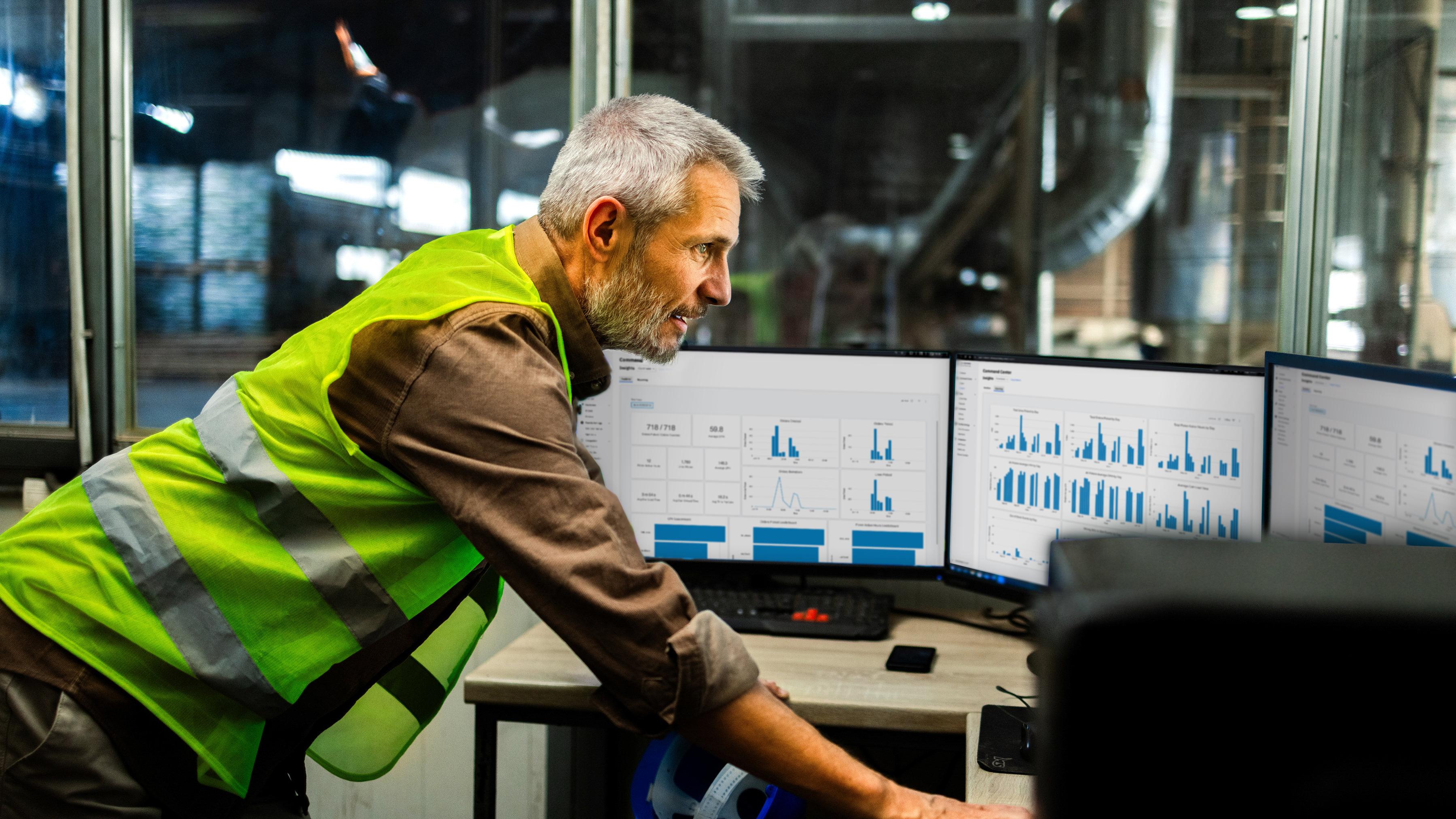
Is Your Business Ready to Comply with the European Union’s Digital Product Passport Legislation?
Before you know it, your company will need digital product passports for everything you make, buy, sell and ship as part of the overarching European Union (EU) Green Deal and the Circular Economy Action Plan. The intent is to ensure that everything from raw materials to finished goods can be tracked throughout the entire production process, and that you can provide confirmation that goods conform to established quality and sustainability standards and regulations. As a result, we should see an elevated level of transparency and sustainability throughout supply chains.
What makes this even more exciting, though, is the opportunity to increase consumer confidence in the safety and quality of products such as batteries, electronics, cosmetics and pharmaceuticals that can be sensitive to environmental conditions.
With the Digital Product Passport (DPP) legislation specifically, you will have to put some foundational systems in place to increase visibility into your supply chain to show the sustainability and circularity of your products and processes. You’ll also need to be transparent about your quality monitoring/control measures. While these changes might seem like a heavy lift at first, I actually think they’re going to make your life so much easier than you realise.
When you consider what causes you the most pain right now, I would suspect that product losses are on the list. Perhaps customers’ mistrust of your brand, too. That’s because you, like other cold chain companies, have probably struggled to say with complete confidence that your products – and the raw materials contained within – have stayed within well-controlled environments their entire life. Though your team and supply chain partners make every effort to maintain the proper temperature, humidity and more in every production, storage and transport environment, how do you know for sure there hasn’t been a deviation? I would argue that someone’s interpretation of the level of heat or humidity in a place is something that’s very subjective. Everyone feels things differently.
That means you can only know – and say – for sure that you’ve maintained full control of a product’s environment, and full control of a product, if you’re using certain technologies to monitor the product’s location, movement and environmental exposure from start to finish.
For example, to ensure the cold chain for your items remains unbroken, you’ll need to add environmental sensors to your product packaging, pallets and/or transport vehicles to monitor temperatures and humidity levels along the way and alert you to any deviations. This will enable you and your stakeholders – such as customers, partners and even your manager – to know that environmentally sensitive products have remained within acceptable parameters throughout their supply chain journey. You’ll also want to leverage RFID to confirm exactly where a product has stopped, how long it was there, and even who handled it (in case you have questions about why it was stalled somewhere a little too long).
Now, I’m sure that you aren’t eager to have to make yet another change for compliance purposes, much less what I call “value-add” systems.
But I strongly feel that the core DPP-dictated changes you’ll have to make will have widespread positive impacts on your business. It will give you the opportunity to (finally) gain – and give others – full visibility into your supply chain. Not just the sustainability or circularity of it, but the quality too. Plus, once you have your DPP compliance systems in place, you won’t have to do too much more, or add much more to your tech stack, to solve so many other business problems – such as preventable inventory losses, excessive emissions and more.
In fact, in some parts of the world (not regulated like the EU), there are companies adding these sensors just because it’s good business practice.
They help drastically reduce the risk of inventory waste or spoilage by reducing the odds that someone tosses a perfectly good product due to suspicion of a temperature excursion. They can also help you restore the trust of customers who have become wary of how well products are handled in transit and storage, especially consumables and cold chain goods. It’s quite possible the temperatures did not rise above or drop below what the indicators show, but you’ll only know for sure if the product(s) remained stable if you reference an environmental sensor that is recording temperature over time.
Of course, the DPP legislation also marks a significant step forward in improving sustainability across European Union (EU) supply chains as the role that environmental sensors will play in helping to protect goods from spoilage or waste will ultimately contribute to a more ethical, sustainable supply chain network. Less going bad, less going to the landfill.
Additionally, the technological advances being spurred across your operation by this DPP legislation will make it easier for you to gain and offer others (such as shipping partners and distributors) the extensive insights they seek into how products are being handled throughout the journey. This will allow everyone to make more informed decisions about shipping times and conditions along the way, while also working to protect sensitive materials from a safety and efficacy perspective. For example, you might be able to finally understand the true scale of your daily operations and potential risk points so you can determine what might help reduce emissions, such as using fewer trucks and planes to transport goods, confirm that temperature-sensitive materials are being stored in appropriate conditions, and limit the use of hazardous substances.
And since the DPP legislation will help create an audit trail for tracking product safety and quality across the EU and beyond, everyone in the value chain – including end users – will be able to enjoy a higher degree of confidence in what they are buying or selling. They will be able to view each step of a product’s journey – from raw material sourcing all the way through manufacturing and shipping – and assist companies in their compliance with EU standards on food safety, chemicals, packaging and other areas at a minimum.
Now, I realise the DPP legislation hasn’t been fully enacted yet. But monitoring environmental conditions of products in transit and storage really shouldn’t be a forced practice considering it has become best practice for all cold chain and consumable products, as I mentioned. Therefore, there are some steps you should be taking now to gain the level of transparency your customers want and your business needs to minimise losses from waste or quality-related claims:
Step One: Assess and Understand Your Supply Chain
The first crucial step is to conduct a comprehensive assessment of your supply chain. Gain a deep understanding of the flow of materials, manufacturing processes, and distribution channels. Identify critical touchpoints where the integration of digital product passports will provide the most value for your business. It’s important to understand that while the goal of DPP is to generate more sustainable supply chains and products, it also offers an opportunity to extract additional business value in the form of greater levels of brand protection, streamlined processes and supply chain visibility and greater consumer confidence.
Connected product platforms like those provided by Kezzler can play a crucial role in mapping your supply chain and helping you achieve this first step – and more. Kezzler, in particular, provides serialisation and traceability solutions that allow you to track products and gather data in real time. They also enable you to monitor and manage your value chain through the use of Digital Product Identities, or DPP. Plus, they are doing some great work on building out the technical requirements and offering support on how to get started with DPP. You might want to check out their white paper on DPP when you get a moment: The Digital Product Passport Imperative.
Step Two: Implement Robust Data Management Systems
To comply with DPP legislation, companies need robust data management systems capable of tracking and storing information throughout the supply chain journey. Businesses leading the way with DPP are investing in technologies that can seamlessly capture and manage data from various sources, including their ERP, warehouse management system (WMS), and various e-commerce systems in addition to environmental sensors that capture temperature and humidity data. Expanding and then connecting this data infrastructure will be crucial for generating accurate DPPs and ensuring compliance with quality and sustainability standards.
Step Three: Integrate Environmental Sensors into the Supply Chain
Environmental sensors are vital for safeguarding environmentally sensitive products. The Cold Chain Federation estimates that temperature excursions in the cold chain can cost businesses up to 20% of their annual revenue, including expenses related to product replacement, customer refunds and reputational damage. Incorporate these sensors at critical stages of the supply chain to continuously track and record the conditions experienced by products. (Collaborate with suppliers and logistics partners to identify those critical stages and effectively integrate the sensors in the right physical locations and with the right information systems.).
Remember the data captured and shared by these devices will enable prompt detection of deviations and potential risks, making it easier to ensure that products remain within acceptable parameters. In fact, a recent study by Aberdeen Group found that companies that actively monitor and manage temperature-sensitive products experience a 66% reduction in product losses and unnecessary waste.
And the reality is that the DPP legislation emphasises the need for accurate temperature monitoring and documentation of shipment and storage conditions through the supply chain. That is why GS1 has now updated their standards to include this as part of EPCIS 2.0, a standard the largest retailers and businesses are now aiming for as part of their overall traceability and sustainability goals.
Step Four: Establish Collaborative Partnerships
Preparing for the DPP era requires collaboration and partnerships with stakeholders across the supply chain. Engage with all your suppliers, manufacturers, logistics providers and customers to ensure seamless integration and information sharing. Partnerships will facilitate the exchange of data and enable that “real-time” visibility that is required for true operational excellence.
Step Five: Train Employees and Foster a Culture of Compliance
Preparing for DPP goes beyond technical implementation; it also requires a well-trained and informed workforce. Educate employees on the requirements of DPP and the importance of compliance. Foster a culture of responsibility and accountability within your organisation, emphasising the significance of accurate data collection, documentation and adherence to quality and sustainability standards. Provide training programs to ensure employees understand their roles and responsibility in implementing and maintaining digital product passports.
In Other Words
By taking the initiative to make these changes now, you’ll be ahead of the curve when the DPP legislation goes into effect, and compliance won’t feel like a burden. If you would like to schedule a consult to discuss the ways environmental sensors may be able to help you gain more operational visibility and make better decisions about the shipping, storage and overall handling of products, reach out here.

Rob Pick
Rob Pick spends his days advising business leaders, especially supply chain managers, on how technologies such as RFID and environmental sensors can be leveraged to achieve greater levels of transparency and confidence in supply chain operations and inventory quality.




